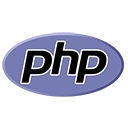PHP is a powerful and versatile programming language used for web development. However, with this power comes responsibility. Insecure coding practices can lead to vulnerabilities that can be exploited by malicious users. One common area of concern is user input. Let's explore the importance of sanitizing user input and some best practices for doing so.
Why Sanitize User Input?
User input is a common attack vector for web applications. Without proper sanitization, attackers can inject malicious code, known as Cross-Site Scripting (XSS) or SQL Injection, leading to data breaches or unauthorized access. Sanitizing user input is crucial to prevent these security risks.
Best Practices for Sanitizing User Input
Here are some best practices for sanitizing user input in PHP:
- Filter Input: Use filtering functions like
to validate and sanitize input data.filter_var() - Use Prepared Statements: When dealing with databases, use prepared statements and parameterized queries to prevent SQL injection.
- Escape Output: When displaying user input on a web page, use output encoding functions like
to prevent XSS attacks.htmlspecialchars() - Validate File Uploads: If your application accepts file uploads, validate file types and use secure storage locations.
Example: Using filter_var()
filter_var() // Example of filtering and validating email input
$userInput = $_POST['email'];
if (filter_var($userInput, FILTER_VALIDATE_EMAIL)) {
echo "Valid email address: " . $userInput;
} else {
echo "Invalid email address";
}
?> Conclusion
Protecting your web application from security threats is paramount. Sanitizing user input is a fundamental step in securing your PHP code. By following best practices and using built-in PHP functions, you can build applications that are robust and resilient to common security vulnerabilities.

